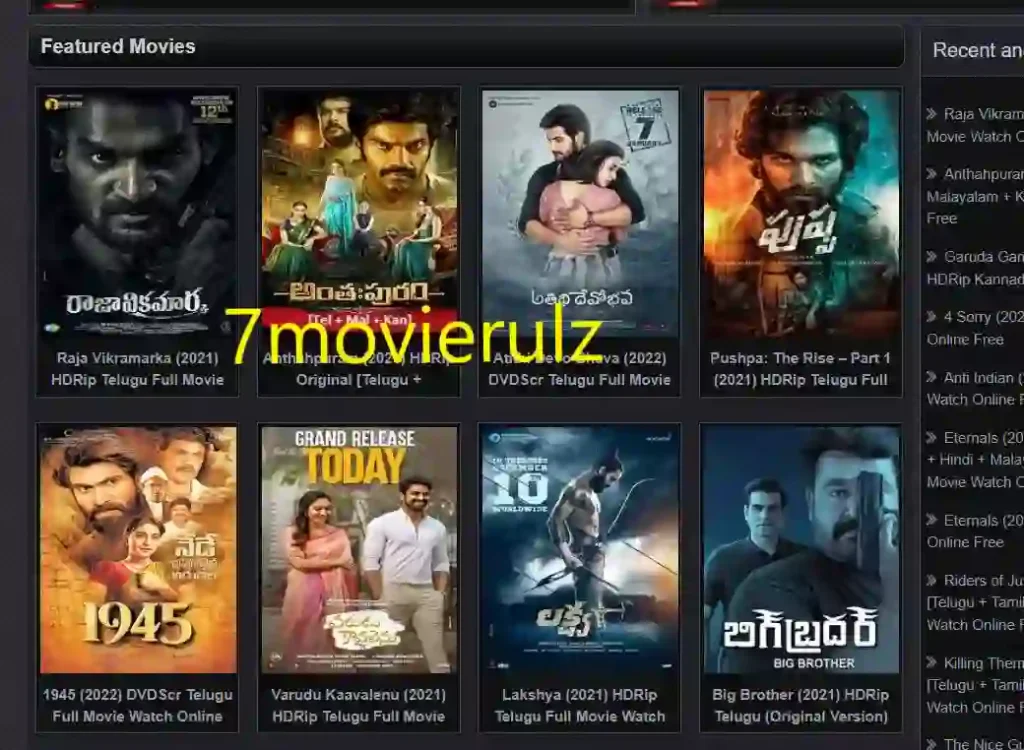Could the digital landscape's relentless churn ever truly be tamed? The answer, in the world of entertainment, seems to be an emphatic 'no,' particularly when the siren song of instant gratification meets the shadowy realm of piracy and the insatiable appetites of film enthusiasts.
The entertainment industry, a global juggernaut, continuously grapples with the evolving dynamics of content consumption. From the glittering premieres of Hollywood to the regional cinemas of India, the hunger for fresh content is relentless. Amidst this, the question of access legal versus illegal and the impact on creators and the industry as a whole, remains a central, often contentious, debate. The rise of streaming services has undoubtedly changed the game, offering a legitimate avenue for accessing a vast library of films and shows. Yet, the persistent presence of entities like Movierulz, a name synonymous with unauthorized movie downloads, serves as a stark reminder of the ongoing battle for content control. The very nature of the internet allows for the spread of copyrighted material in ways that constantly challenge legal frameworks and industry efforts to protect their intellectual property.
The proliferation of websites offering pirated content isn't just a technical challenge; its an ethical one. The creation of a film, a television series, or any form of visual art is a complex undertaking. It involves significant investment, not only in terms of financial resources but also in the creative endeavors of hundreds, sometimes thousands, of individuals. From the actors on screen to the writers crafting the story, the technicians behind the cameras, and the editors shaping the final product, a collaborative effort brings these works to fruition. Piracy undermines this creative process by devaluing the work of all involved. It deprives creators of the compensation they deserve and, in the long run, can diminish the incentives for investing in and producing high-quality content.
The emergence of a film like "Marco," a Malayalam production gaining traction, exemplifies this dynamic. While the film itself may be a success story, its availability on platforms like Movierulz highlights the tension between legitimate and illegitimate avenues for viewing. For the Telugu audience, the January 1st release date brought anticipation. This simultaneous buzz showcases the global reach of cinema and the immediate demands of the audience to view it. Whether the film "Marco" will successfully resonate with Telugu audiences or not becomes a secondary question when contrasted with the availability and accessibility, legal or illegal, of it.
The situation of Movierulz provides an insight into the multifaceted nature of this challenge. The sites core function is undeniably straightforward: providing access to the latest movies for free, bypassing the legal channels of distribution. This model is built on the availability of copyrighted content that is acquired and shared without permission. This practice is not only illegal, but it also damages the industry that is dependent on ticket sales, rentals, and streaming subscriptions to finance new projects and pay for the talent that creates these projects.
This brings us to the question of where to find the latest information and reviews. Often, this information is shared on platforms such as Movierulz. These platforms present themselves as up-to-date sources for reviews and news. However, these often serve to promote the illegal sharing of media. A better option is to find legitimate sources, such as Etimes, who offer reviews on movies and television. By following these platforms, one can be sure to find the proper information without having to resort to breaking the law.
The term "Movierulz 2025" is a curious one. The addition of a future date to a service that primarily caters to the present suggests a forward-looking approach, possibly with the intention of providing ongoing updates and reviews. This could signal an attempt to evolve beyond its current form and establish itself as a comprehensive platform for entertainment news and information. What is certain is that as long as new films are made, the demand for information about them will continue to exist. The question lies in whether those who seek the information will opt for sources that uphold copyright law and offer safe and legal platforms for viewing.
The discussion also brings up the forthcoming releases for 2025. Film studios are gearing up for another year of blockbusters and independent films, creating buzz about movies like "Sinners," "The Accountant 2," and "Predator." These upcoming productions will be subject to a similar mix of expectations, anticipation, and the constant threat of piracy. The industrys approach to these releases will be critical in shaping the entertainment landscape. Legal distribution methods, coupled with proactive measures to counter piracy, will prove important in this case. The focus has to be on preserving and protecting the rights of content creators and the sustainability of the entertainment business as a whole.
A film such as Daku Maharaj, combining the talents of a Tollywood star and a renowned director, serves as a case study for the industry as a whole. The release of the film on the Sankranthi holiday is a deliberate strategy. This is to capitalize on the holiday spirit and provide audiences with a theatrical experience. The success of the film is contingent on factors such as reviews, box office numbers, and the films ability to resonate with the audience. However, the films future is threatened by illegal platforms that will threaten the industry, no matter its quality.
The issue is a complex mix of technology, law, and human behavior. The entertainment industry will continue to adapt. Legal entities must continue to look for creative ways to deliver content in a way that responds to consumer demand while upholding the rights of creators. This continuous cycle will be critical to ensuring a healthy and sustainable entertainment environment in the future.
The focus should be on the role that piracy plays in the distribution and consumption of movies. One must not disregard the contributions and the legal implications. Its a constant battle for any entertainment platform to stay relevant while upholding the standards of intellectual property rights.
The final conclusion can only be that both the creators of content and the consumers of content need to play their part in ensuring the entertainment industrys future. They must follow the rules and the laws to ensure that their creativity lives on.



